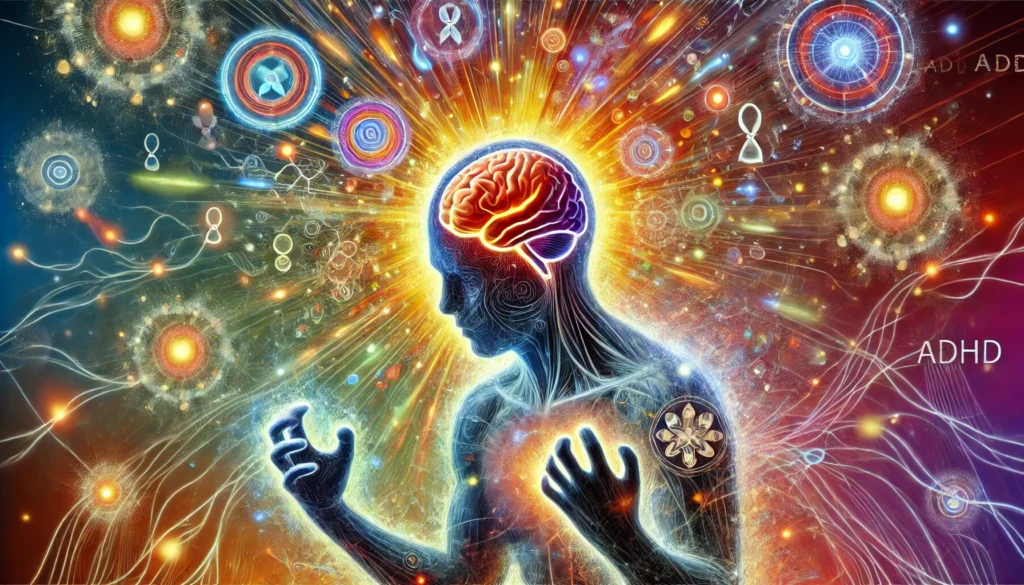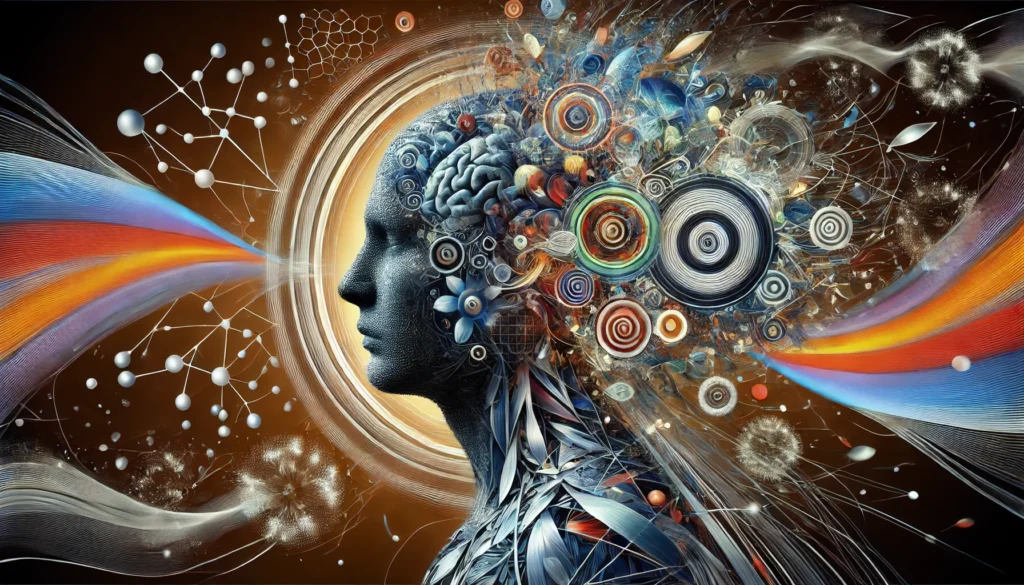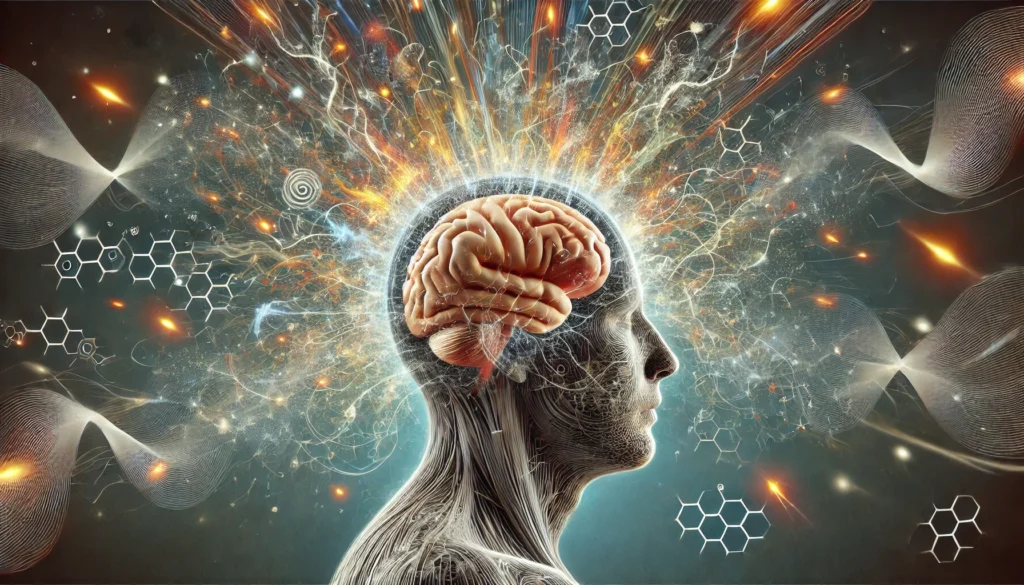ADHD, sometimes called “attentionitis syndrome” or “hyperactive disorder,” is characterized by a persistent pattern of inattention and/or hyperactivity-impulsivity that interferes with functioning or development. While often perceived as a childhood disorder, ADHD can persist into adulthood, affecting an individual’s ability to manage daily tasks.
You may also like: Enhancing Concentration: Strategies for ADHD
The Neurological Basis of ADHD
ADHD is fundamentally a neurological condition. It involves differences in brain structure, particularly in areas responsible for attention and executive function. Research has shown that neurotransmitters like dopamine and norepinephrine play a crucial role in ADHD. These chemicals are involved in transmitting signals in the brain, and imbalances can lead to the symptoms associated with ADHD.
ADHD Across the Lifespan
While ADHD is most commonly identified in children, it does not simply disappear with age. Many individuals continue to experience symptoms into adulthood. The manifestations of ADHD can change over time; for example, hyperactivity may decrease, but issues with attention and impulse control can persist. Understanding these changes is critical for providing appropriate support throughout an individual’s life.
Societal Perceptions and Misunderstandings
Society often misunderstands ADHD as merely a lack of discipline or motivation, which can lead to stigma. This misconception can be harmful, preventing individuals from seeking or receiving the help they need. Educating the public about the true nature of ADHD is essential for reducing stigma and promoting understanding.
Historical Context and Evolution of ADHD
The concept of ADHD has evolved significantly over the years. Initially, symptoms were labeled as “minimal brain dysfunction” in the early 20th century. As our understanding of neurological and psychological health improved, the term evolved to “Attention Deficit Disorder” (ADD) in the 1980s, and eventually to ADHD, as we know it today. The term “ADHS vs ADHD” is often used in German-speaking regions, where “ADHS” stands for “Aufmerksamkeitsdefizit-/Hyperaktivitätsstörung,” reflecting the same disorder.
Early Theories and Misconceptions
In its early days, ADHD was often misunderstood. The term “minimal brain dysfunction” suggested a more severe neurological impairment than what is typically the case. This led to misconceptions and inappropriate treatments. Over time, as research advanced, understanding improved, and more accurate representations of the disorder emerged.
The Shift from ADD to ADHD
The transition from ADD to ADHD marked a significant shift in the understanding of the disorder. This change acknowledged the presence of hyperactivity as a key component for many individuals. It also paved the way for more nuanced diagnostic criteria, allowing for greater specificity in identifying and treating the disorder.
Global Recognition and Terminological Variations
ADHD is recognized worldwide, but terminology and diagnostic criteria can vary by region. In German-speaking countries, the term “ADHS” is used, while in other areas, different terms may be employed. Despite these variations, the core understanding of the disorder remains consistent, emphasizing the need for international collaboration in research and treatment.

ADHD Symptoms: What to Look Out For
ADHD symptoms can be broadly categorized into two types: inattention and hyperactivity-impulsivity. Some individuals exhibit symptoms predominantly from one category, while others may display a combination of both.
Inattention Symptoms
- Difficulty sustaining attention in tasks or play activities.
- Frequent careless mistakes in schoolwork, work, or other activities.
- Often seems not to listen when spoken to directly.
- Fails to follow through on instructions and fails to finish schoolwork, chores, or duties in the workplace.
- Avoids or is reluctant to engage in tasks that require sustained mental effort.
- Loses items necessary for tasks and activities.
- Easily distracted by extraneous stimuli.
- Forgetful in daily activities.
Identifying Inattention in Different Settings
Inattention can manifest differently depending on the setting. In school, it may appear as an inability to focus on assignments, while at work, it could translate to missed deadlines or incomplete projects. Recognizing these signs in various contexts is crucial for accurate diagnosis and support.
The Impact of Inattention on Daily Life
Inattention can significantly disrupt daily life, affecting academic and professional achievements. It may lead to misunderstandings in social interactions or cause individuals to miss important details. Understanding these impacts can help in developing strategies to mitigate them.
Strategies to Manage Inattention
Managing inattention often involves environmental modifications and behavioral strategies. Techniques such as breaking tasks into smaller parts, using organizational tools, and creating structured routines can be beneficial. These strategies aim to improve focus and task completion.
Hyperactivity-Impulsivity Symptoms
- Fidgets with or taps hands or feet, or squirms in seat.
- Leaves seat in situations when remaining seated is expected.
- Runs about or climbs in inappropriate situations.
- Unable to play or engage in leisure activities quietly.
- Talks excessively.
- Blurts out answers before questions have been completed.
- Has difficulty waiting for their turn.
- Interrupts or intrudes on others.
Understanding Hyperactivity in Context
Hyperactivity is often more noticeable in children, but it can persist into adulthood. In adults, it might manifest as restlessness or a constant need to be on the move. Recognizing these behaviors in various contexts is essential for effective management.
Impulsivity and Its Consequences
Impulsivity can lead to risky behaviors and poor decision-making. It may cause difficulties in maintaining relationships or managing finances. Understanding these challenges is key to providing appropriate interventions and support.
Techniques to Address Hyperactivity and Impulsivity
Addressing hyperactivity and impulsivity often involves a combination of behavioral strategies and, in some cases, medication. Techniques such as mindfulness, exercise, and structured activities can help manage these symptoms, promoting better self-control and focus.
Diagnosing ADHD: What Does It Involve?
Diagnosing ADHD is not a straightforward process. It involves a comprehensive evaluation, typically conducted by a psychologist or psychiatrist, which includes a clinical interview, behavior rating scales, and often input from teachers or family members.
The Diagnostic Process
- Clinical Interview: This involves gathering detailed information about the individual’s behavior patterns, developmental history, family history, and any other relevant background information.
- Behavior Rating Scales: These standardized tools help assess the frequency and severity of ADHD symptoms. Commonly used scales include the Conners’ Adult ADHD Rating Scales and the ADHD Rating Scale-IV.
- Observational Data: Input from teachers, parents, or significant others can provide valuable insights into the individual’s behavior across different settings.
- Rule Out Other Conditions: It’s crucial to differentiate ADHD from other possible conditions like anxiety, depression, or learning disabilities that may present with similar symptoms.
The Role of Comprehensive Interviews
A thorough clinical interview is the cornerstone of ADHD diagnosis. It helps clinicians understand the individual’s unique experiences and challenges. This process involves exploring the individual’s developmental history, family dynamics, and any co-occurring conditions that might affect the presentation of symptoms.
Behavioral Assessment Tools
Behavioral rating scales are essential in quantifying the severity of ADHD symptoms. These tools provide a standardized method for evaluating behaviors across different settings. They help clinicians make informed decisions about diagnosis and treatment plans, offering a more objective measure of symptomatology.
The Importance of Gathering Multi-source Data
Collecting data from multiple sources, such as teachers and family members, provides a holistic view of the individual’s behavior. This input is invaluable in understanding how symptoms manifest in different environments, ensuring a more accurate diagnosis. It also highlights the need for a collaborative approach in managing ADHD.

Treatment Options for ADHD
While there is no cure for ADHD, various treatment options can help manage symptoms and improve functioning. The treatment plan is often tailored to the individual’s specific needs and may include medication, behavioral therapy, lifestyle changes, and educational interventions.
Medication
Stimulant medications, such as methylphenidate (Ritalin) and amphetamines (Adderall), are the most commonly prescribed for ADHD. These medications help increase attention and focus while reducing impulsive behavior. Non-stimulant medications, like atomoxetine (Strattera), can also be effective, especially for individuals who do not respond well to stimulants.
Understanding the Role of Stimulants
Stimulant medications are often the first line of treatment for ADHD. They work by increasing levels of certain neurotransmitters in the brain, improving attention and focus. Understanding how these medications function can help individuals and caregivers make informed decisions about treatment options.
Exploring Non-stimulant Alternatives
For some individuals, non-stimulant medications may be more appropriate. These medications often have fewer side effects and can be effective for those who do not respond well to stimulants. Exploring these alternatives is crucial for providing a comprehensive treatment plan tailored to the individual’s needs.
Considerations for Medication Management
Medication management involves ongoing monitoring and adjustment of dosages to achieve optimal results. This process requires collaboration between healthcare providers, individuals, and families. Understanding the nuances of medication management can help in achieving the best possible outcomes.
Behavioral Therapy
Behavioral therapy focuses on modifying behavior patterns through positive reinforcement, setting clear expectations, and creating structured environments. Cognitive Behavioral Therapy (CBT) can also be beneficial, particularly for adults, in managing symptoms and developing coping strategies.
The Principles of Behavioral Therapy
Behavioral therapy is rooted in the concept of modifying behavior through reinforcement. It involves setting clear goals and expectations, using rewards to encourage desired behaviors. Understanding these principles can aid in the successful implementation of therapeutic strategies.
Cognitive Behavioral Therapy for ADHD
Cognitive Behavioral Therapy (CBT) is particularly useful for adults with ADHD. It helps individuals develop coping strategies and improve executive functioning. Exploring the benefits of CBT can provide valuable insights into managing ADHD symptoms effectively.
Creating Structured Environments
Creating structured environments is a key aspect of behavioral therapy. This involves establishing routines and organizing physical spaces to reduce distractions. Understanding how to create such environments can significantly impact the management of ADHD symptoms.
Lifestyle and Educational Interventions
- Lifestyle Changes: Incorporating regular physical activity, maintaining a balanced diet, and ensuring adequate sleep can significantly impact ADHD symptoms. Mindfulness practices and stress management techniques can also be beneficial.
The Impact of Lifestyle Modifications
Lifestyle changes can have a profound effect on managing ADHD symptoms. Regular exercise, a healthy diet, and sufficient sleep are crucial components. Understanding the role of these factors can help individuals make informed choices that support their well-being.
- Educational Support: Accommodations such as extended test times, note-taking assistance, and seating arrangements can help students with ADHD succeed academically. Teachers and parents can collaborate to create individualized education plans (IEPs) tailored to the student’s needs.
The Role of Mindfulness and Stress Management
Mindfulness and stress management techniques can enhance overall well-being. These practices help individuals develop greater self-awareness and emotional regulation, which are essential for managing ADHD symptoms effectively.
Tailored Educational Interventions
Educational interventions are critical for supporting students with ADHD. Individualized education plans (IEPs) and classroom accommodations can significantly improve academic performance. Understanding the needs of students and tailoring interventions accordingly is essential for fostering success.

The Future of ADHD: Trends and Implications
Advancements in neuroscience and technology hold promise for the future of ADHD treatment. Emerging research on the brain’s neuroplasticity suggests potential for interventions that may alter the course of the disorder. Additionally, digital therapeutics and personalized medicine approaches are being explored to provide more individualized and effective treatment options.
Neuroscientific Advances and Neuroplasticity
Recent discoveries in neuroscience have opened new avenues for understanding ADHD. Neuroplasticity, the brain’s ability to reorganize itself, offers hope for developing interventions that can modify brain function. Exploring these advances can lead to more effective treatments in the future.
The Role of Digital Therapeutics
Digital therapeutics are emerging as a promising tool for managing ADHD. These interventions use technology to deliver personalized treatment plans and track progress. Understanding the potential of digital therapeutics can revolutionize the way ADHD is treated and managed.
Personalized Medicine and ADHD
Personalized medicine aims to tailor treatment plans to an individual’s unique genetic makeup and environmental factors. This approach holds promise for more precise and effective interventions. Exploring personalized medicine can lead to more successful outcomes for individuals with ADHD.
Conclusion
ADHD is a multifaceted disorder that requires a comprehensive approach for effective management. By understanding the symptoms, diagnostic process, and treatment options, we can better support individuals with ADHD in leading fulfilling lives. As research continues to evolve, there is hope for even more innovative solutions to address the challenges posed by ADHD.
Understanding ADHD in its entirety enables us to create supportive environments and implement effective strategies. Through continued research and collaboration, we can pave the way for advancements that will improve the lives of those affected by ADHD. The future holds promise for more personalized and effective treatments, offering hope for individuals and families navigating this complex disorder.
Further Reading:
Attention Deficit Hyperactivity Disorder (ADHD)
ADD vs. ADHD Symptoms: 3 Types of Attention Deficit Disorder
Adult attention-deficit/hyperactivity disorder (ADHD)
Important Note: The information contained in this article is for general informational purposes only, and should not be construed as health or medical advice, nor is it intended to diagnose, prevent, treat, or cure any disease or health condition. Before embarking on any diet, fitness regimen, or program of nutritional supplementation, it is advisable to consult your healthcare professional in order to determine its safety and probable efficacy in terms of your individual state of health.
Regarding Nutritional Supplements Or Other Non-Prescription Health Products: If any nutritional supplements or other non-prescription health products are mentioned in the foregoing article, any claims or statements made about them have not been evaluated by the U.S. Food and Drug Administration, and such nutritional supplements or other health products are not intended to diagnose, treat, cure, or prevent any disease.


